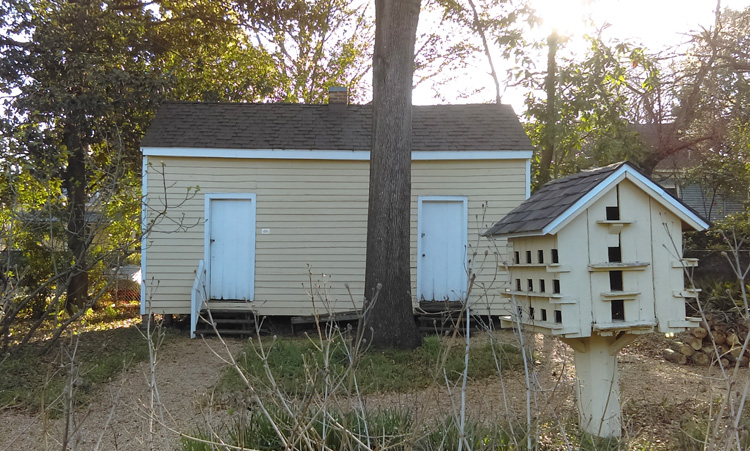3. Slave Cabin
Hot, dark and cramped, this slave cabin, located behind the Walter-Peters-Langdon house, was home for between 10 and 15 slaves. Sleeping in the loft, slaves would leave this building to work in every part of Columbus' economy. Indeed, slaves made up around 30% of the city's population by 1860.
In the day urban enslaved people worked as domestic and industrial laborers. Enslaved people were apprenticed to butchers, carpenters, saddle makers and masons. Enslaved people in Columbus built the brick roads we walk upon, and the bridges, homes and factories we still see today, Slaves would transport goods between rural and urban areas. They worked in shipyards constructing river boards, they loaded and unloaded goods between the docks and river steamers travelling up the Chattahoochee RiverIndeed, most types of work that people could do, slaves were pressed into that work too. Owners “hired out” these skilled slaves by renting them to others for a fee or daily rate. Sometimes slaves hired themselves out and though most of that income would be given to the owner, laborers often kept a portion, and could live on their own and in a few cases, they could purchase their freedom. Indeed, Horace King, a structural engineer born into slavery purchased his freedom having designed and constructed numerous bridges across the Chattahoochee River.
As long as there was slavery there were slaves that worked in the urban sphere.
This slave cabin was moved from the property of Johanna Lange on the west side of Second Avenue and 13th Street before it was raised to the ground.

References and Further Reading
Heicht, Callie 2017, Historic Columbus Foundation. E-mail correspondence with author..
Harris, Rogers 1992, Our Town: An Introduction to the History of Columbus, Georgia, Columbus, GA.
Picture courtesy of Historic Columbus Foundation.
